Dragonflies -
the most amazing migrating insects, leaving in October!
First of all, I had meant to send you a special discount offer for a paid subscription, but I messed up and instead you got a notification for free gift subscriptions, which doesn’t make much sense because I don’t have a paywall.
So, I’m trying again — if you click this link it will take you to a page where you can sign up for a discounted subscription. It’s available all through October, so you’ll see it again with later posts. I was going to apologize because I find self-promotion excruciatingly painful, but I’ll refrain.
And now, to the dragonflies!
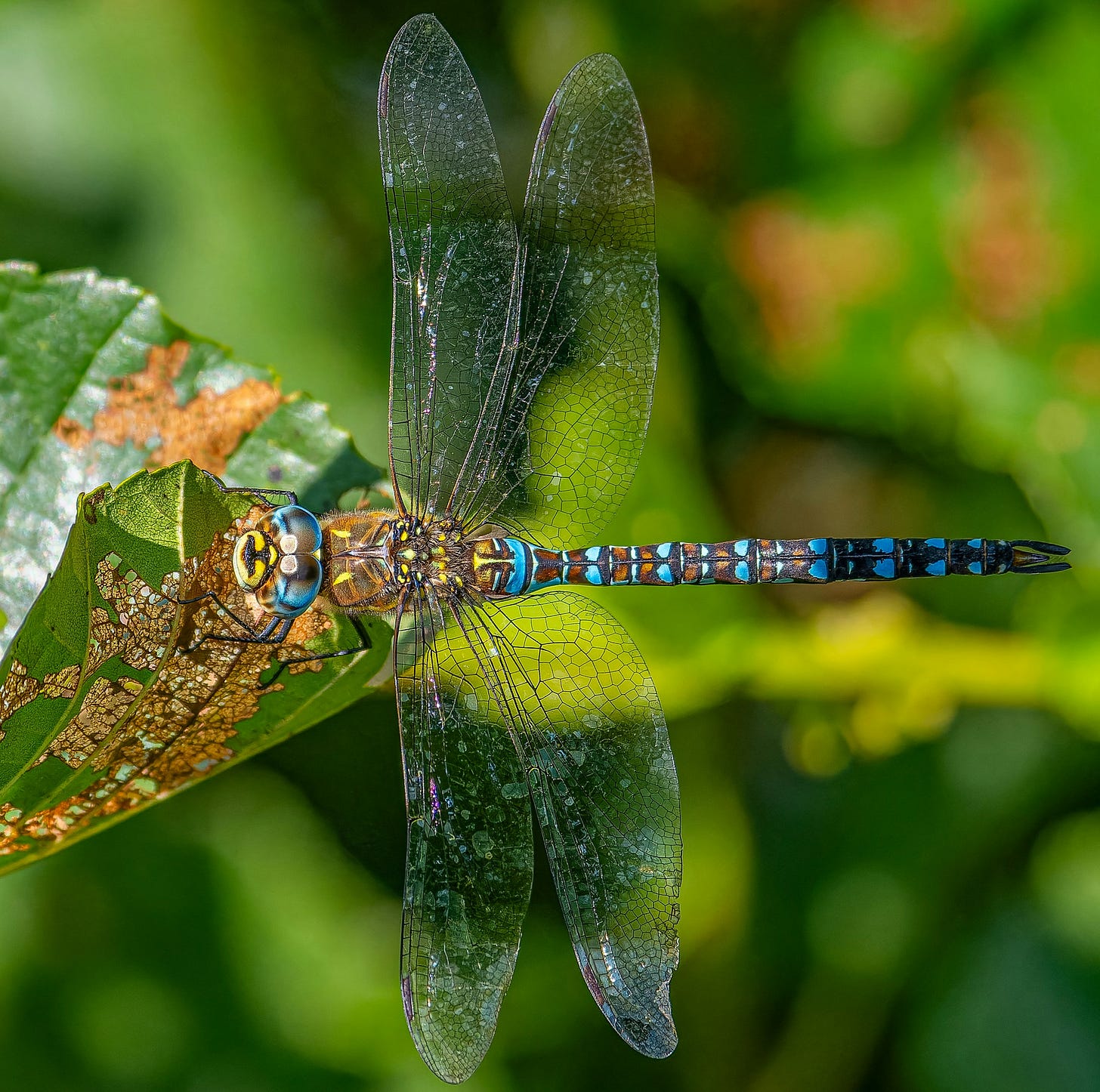
Monarch butterflies are famous for their yearly migrations. In the fall, those from the northeastern United States and southern Canada travel south to Mexico – a journey of up to 3,000 miles. The western Monarch population, who spends the summer just west of the Rocky Mountain range, migrates to California for the winter months. In the spring, they reverse the journey.

But did you know that many other insects such as dragonflies, beetles, moths, and other butterflies migrate as well? Even some grasshoppers do! Every year, trillions of insects travel vast distances because of seasonal changes – it might become too cold for them, or the food they depend on is no longer available. Researchers don’t know all that much about the why and how; it’s difficult to track the movements of tiny creatures over vast distances.
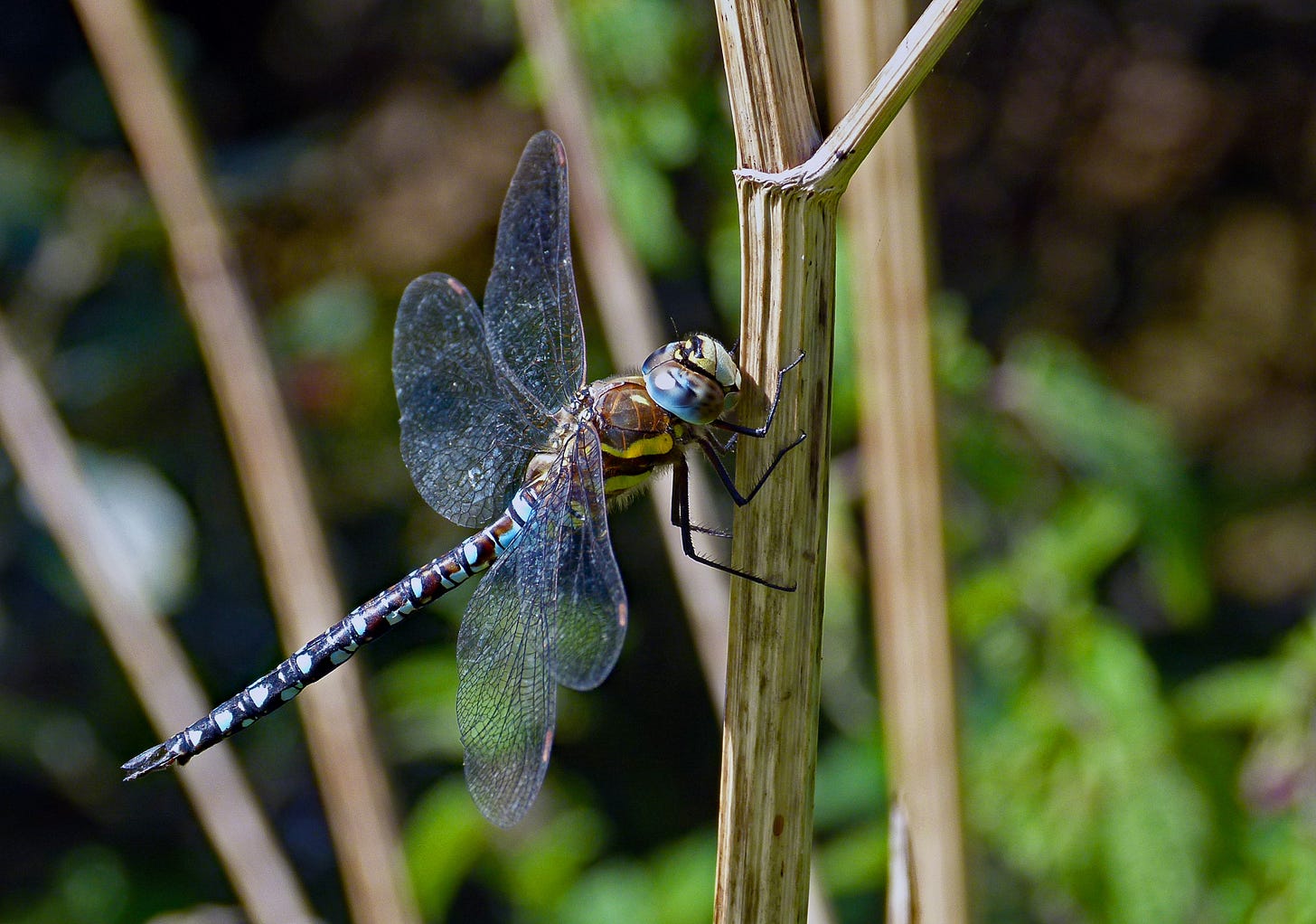
Recent technological break-throughs have allowed scientists to deepen their knowledge of the insect world. They’re partly motivated by the alarming decline of these populations: over 40% of insect species are threatened by extinction right now, and 65% are in danger of going extinct over the next 100 years. This is due to the usual suspects: habitat loss because of urbanization and agriculture; the use of pesticides and fertilizers which contaminate water, air, and soil; climate change affects insects particularly in tropical regions. Because insects play such a significant role in the food production for us humans, scientists are concerned.
Emerging technologies which will facilitate global insect surveys include tracking of different properties such as the characteristic sounds they make. Cheap devices can record the sounds, and computer-based methods and artificial intelligence then assign them to the insects that produced them. Another recent development: a new wireless sensing platform called mSAIL which was specifically designed for monarch migration. It’s a tiny sensor that’s attached to the butterfly's back and wirelessly transmits information back to the researchers. It is so light (weighing only 62 milligrams) that it doesn’t hinder the creature in any way. Actually, this is a huge benefit of the new technologies: unlike traditional insect research, they don’t hurt or kill the animals they study.
And now, let’s look at dragonflies: you may be as surprised as I was to learn that one species, aptly called globe skimmer (Pantala Flavescens) holds the world record for the longest insect migration: they can stay airborne for up to 240 - 280 hours at a time, and cover 11,000 miles during their migration; from India to Africa and back again. That sounds impossible for such a tiny insect, and yet – scientists have established that globe skimmers do indeed manage this extraordinary feat. HOW exactly they can do that – how they navigate with such precision – that’s still a mystery.
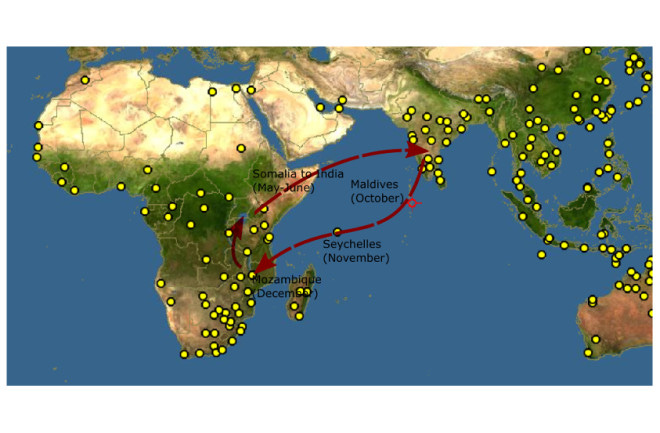
There are about 3,000 species of dragonflies, and some of their ancestors from 350 million years ago had wingspans of up to 30 inches! The fossils like the one below are sometimes called griffinflies and are distant relatives of our current dragonflies.

I found some fascinating facts about dragonflies: females lay their eggs in water, and after they hatch into nymphs (also called larvae), they live underwater for about two years – up to five years in large species. During that stage they voraciously eat anything that comes close: tadpoles, mosquitoes, fish – even each other. Once nymphs are ready to metamorphose into adults, they find a safe spot where they can keep the head out of the water, and for several hours they adjust to breathing air. Next, they climb up on a plant (holding firmly onto it with their claws}, their exoskeleton – the hardened tissue that surrounds each nymph – begins to split, and the adult dragonflies emerge. What a miraculous transformation.
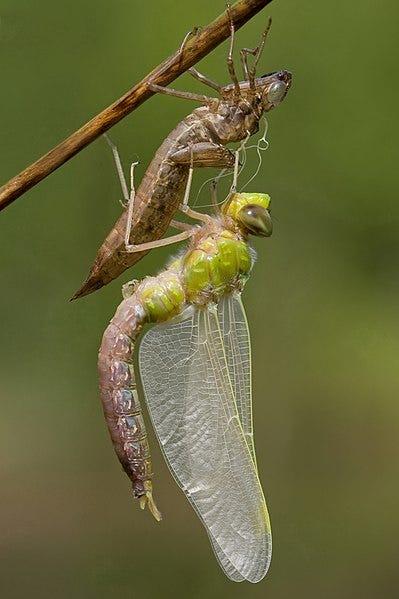
Another amazing aspect of dragonflies is their vision which encompasses almost 360 degrees. Their huge, compound eyes cover most of the head and consist of close to 30,000 facets or lenses (ommatidia). This allows dragonflies to see colors which humans can’t perceive, such as ultraviolet (UV) light, and makes them extremely sensitive to movement and therefore, hard to catch. How they process and use the information provided by their large eyes is still mostly a mystery.
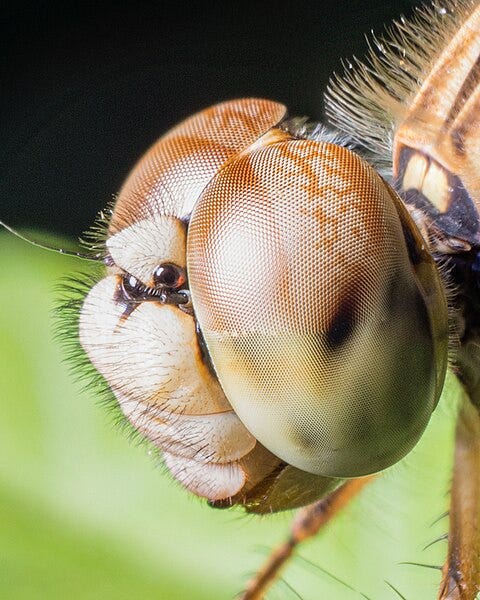
But the most astonishing characteristic of dragonflies has only been discovered quite recently: their capacity for epic long-distance migrations. Let’s start with the globe skimmer, also called globe wanderer, or wandering glider (Pantala Flavescens), currently known as the world’s Number One long-distance flyer. Marine biologist R. Charles Anderson who lives in the Maldives, posited in 2009 that the swarms of dragonflies he had observed actually came from India and continued to Africa, after a stop-over at the Maldives – traveling an estimated distance of 4,400 miles and more, over 2,000 miles across the open waters of the Indian Ocean. In 2016, biologists at Rutgers University-Newark conducted a study where they analyzed DNA samples taken from globe skimmers at various locations. They found that populations as far apart as Texas, eastern Canada, Japan, Korea, India, and South America have genetic profiles so similar that they just HAVE to be the same creature.
“During their documented multigenerational migration route from India to east Africa and back again, swarms of millions of P. flavescens can cover a total distance ranging from, or possibly exceeding, 14,000–18,000km” 1
This was further confirmed in 2021 by an international research team based at Lund University in Sweden. Using simulations and meteorological wind models, the scientists concluded that with favorable winds which are present at certain times each year, about 15 percent of the dragonflies could manage the journey from India to Africa in the spring, and 40 percent could migrate back in the fall. They also stated that climate change could alter the wind patterns, and thus negatively affect the dragonflies’ journey.
All migrating dragonflies complete their trip over several generations. The Green Darner (Anax junius) for example, one of the most abundant species in North America, needs at least three generations for their migration cycle. From mid-August through October, Green Darners fly from Canada and the northern United States to Mexico and Central America. Once they reach their destination, they mate, the females lay eggs, and then they die. The emergent insects spend the winter in the warm area, don’t migrate, and produce offspring before they die. The third generation, once they matured, leaves in the spring for the long journey north.
How do they know where to find their destination? When to leave? Why do the overwintering insects stay put? We don’t know. When I consider that I need an app to drive around here in Massachusetts, I am humbled. Dragonflies were always a lovely sight when I met them, but I didn't know how truly amazing they are.




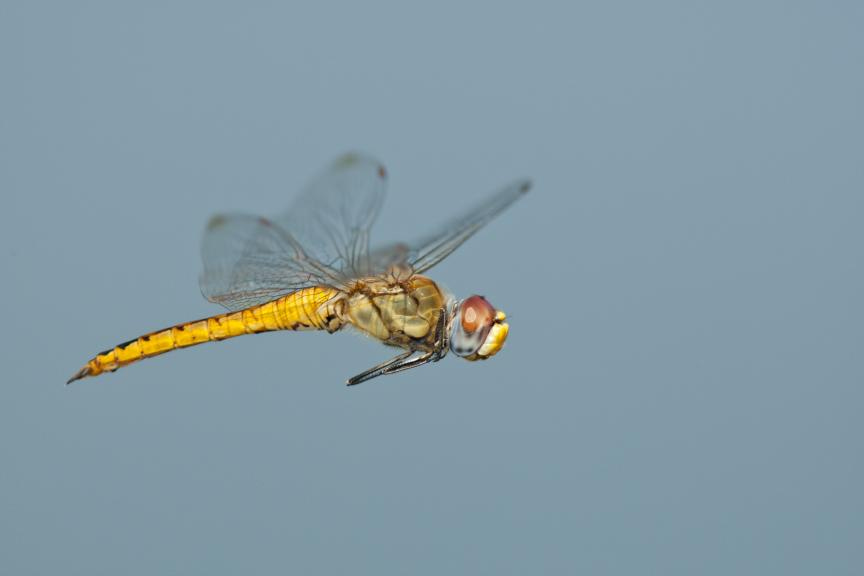
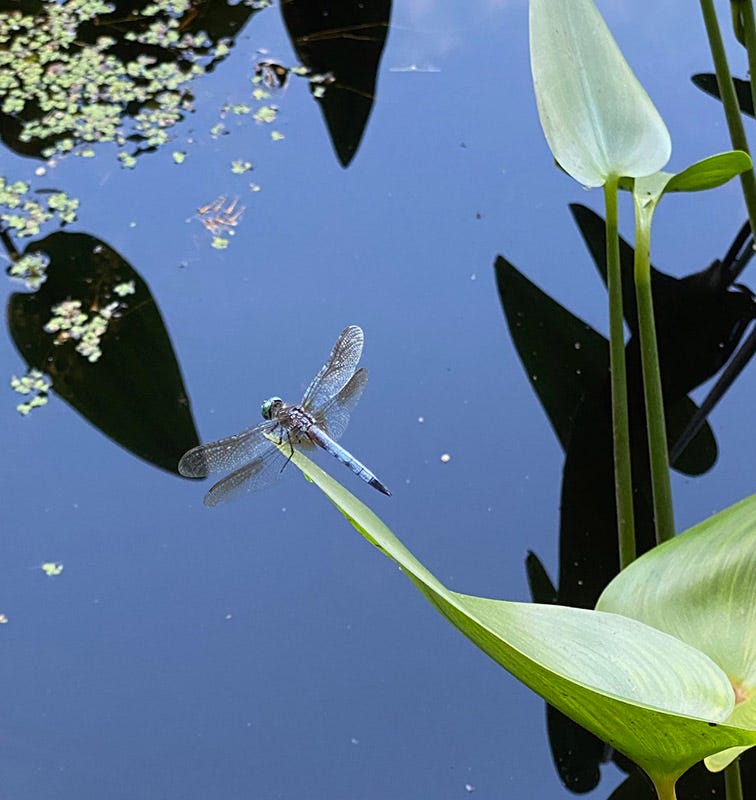
I had no idea Jessica! Astounding to read about them, Thank you.
git up and go must be their touch phrase and what an adventure !! wonderful post i enjoyed it / i have dragonflies in my 'pond' / i've been stung by a nymph in the water (presumably) and found the exoskeleton of a dragon fly on the wall of the pool where it had climbed out of the water / usually some little blue ones and larger (but not 30" wingspan) red ones appear every summer in my backyard / don't worry about the self-promotion people understand / I have not found any self-promotion that i was comfortable that people responded to (thank you for being one ) / people read things for free online all the time so they come to expect it and don't see the difference between a finely honed post that took many hours to create and an article in usa today with typos composed in a matter of minutes with AI and a corporate agenda